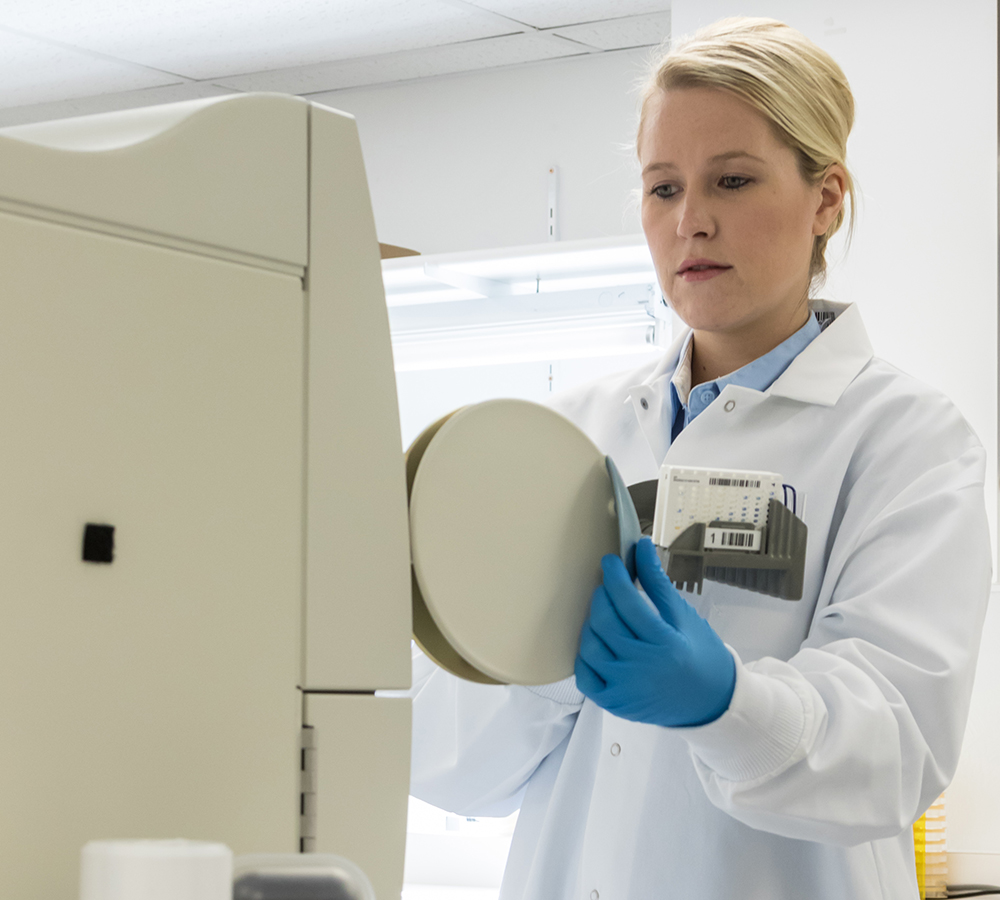Quality control testing for microbial identification systems is an important step all laboratories should take to ensure accurate results. However, it can be difficult to decide which strains to use for QC. In this post, we will provide tips and resources to help you choose strains for:
- Verification of new identification and antimicrobial susceptibility testing (AST) systems
- Assessment of new lots or shipments of kits and reagents
- Routine testing
The Verification Process
If you purchase a new microbiology identification system or add a new test card or panel, you will need to verify the manufacturer’s performance specifications before reporting results. Specifications include accuracy and precision (reproducibility). A verification study may include the following steps:
- Reviewing the manufacturer’s specifications.
- Reviewing literature and standards (for example, CMS, CLSI, CAP, Cumitech, ASM*).
- Writing a verification plan including the acceptance criteria.
- Running the new test system in parallel with the existing system and comparing results.
- Checking the reproducibility of test results by testing samples at least twice with more than one operator if the system is operator dependent.
Choosing Strains for Verification
Here are a few tips for choosing microorganism strains for verification:
- Test several strains. Cumitech 31A, a publication written for clinical laboratories by the American Society for Microbiology (ASM), recommends testing a minimum of 20 strains1.
- Use the quality control microorganisms the manufacturer recommends. The manufacturer’s recommendations are often found in the product manual or in the “Information for Use” instructions.
- Choose a variety of species. For example, Escherichia coli, Klebsiella pnemoniae, Pseudomonas aeruginosa, Acinetobacter baumannii, and several other species of gram negative bacilli can be used to verify a gram negative biochemical card or panel. In another example, one or more methicillin-resistant S. aureus, vancomycin-resistant enterococci, extended-beta-lactamae positive K. pneumoniae and carbenamase producing K. pneumoniae can be used to verify a gram positive AST card or panel.1
- Use strains that are representative of species seen in your laboratory. For example, clinical labs might use strains commonly isolated from throats or sputum. If you do not have enough isolates at your site to test, you can obtain the strains you need from a reference culture collection or qualified secondary supplier. These strains are well-characterized and the source of the microorganism is often known (for example, the original source of the strain might be human blood or a pig’s ear).
- Carefully follow the manufacturer’s instructions for growing and testing the strain. For example, the Vitek® 2 gram positive card requires that QC microorganisms be grown on TSA with 5% sheep blood.
- Keep microorganisms healthy. According to the College of American Pathologists (CAP), QC organisms should be “maintained in a manner to preserve their bioreactivity, phenotypic characteristics and integrity.”2
Quality Control of Phenotypic Microbiology ID Systems
Labs in the United States must consider Center for Medicare and Medicaid Services (CMS) regulations, accreditation requirements and state regulations.
Clinical Laboratory Improvement Amendments (CLIA) brochure #12, published by CMS, states that you may perform QC procedures using the CLIA requirement for daily testing of two levels of external control materials for all biochemical tests or perform an Individualized Quality Control Plan (IQCP).3
The accrediting body, CAP, states clinical laboratories using a microbiology ID system with two or more substrates are required to either:
- “Use positive and negative control organisms to check reactivity of all biochemical tests in each new lot number and shipment of reagents for ID systems,” or
- “Implement an IQCP (Individualized Quality Control Plan) to perform streamlined QC.”3 Streamlined QC allows laboratories to use fewer quality control microorganisms when they perform QC on their identification system.4
If your state has requirements that do not allow for an IQCP option, you must follow state requirements.3
IQCP
If a laboratory wants to implement the IQCP option for their microbial identification system, they must assess the risk of an inaccurate result, develop a quality control plan based on the risk, and create a post-implementation monitoring process. Once the IQCP plan has been approved by the laboratory director, the laboratory may use streamlined QC as specified by the manufacturer’s instructions. Additional microorganisms may be added.5 ASM, CAP, and CLSI provide materials about and examples of IQCP for phenotypic microbial identification and AST systems.
Other Microbial Identification Systems
In addition to phenotypic microbial ID systems, the CAP Microbiology Checklist lists requirements for proteolytic and molecular tests. For example, according to CAP MIC.16605, laboratories using MALDI-TOF systems to perform organism identification must run appropriate control organisms each day of patient testing. “Appropriate controls would include at least one bacterium, with a representative yeast and mycobacterium also being run if these organisms are being tested for that day/routinely.”2
Keeping Quality Control Microorganisms Healthy
Healthy QC strains will make testing easier. Below are a few tips for preserving the bioreactivity, phenotypic characteristics and integrity of QC strains:
- Purchase well-characterized strains from a reference culture collection or a qualified secondary supplier. Keep the manufacturer’s Certificate of Analysis for your records.
- If you use a patient strain for verification, record its source and all test results.
- Limit the number of transfers. Each time a microorganism is sub-cultured there is a risk of mutation. Microbiologics provides a plan for maintaining microorganisms – Maintenance of Quality Control Strains.
- Follow manufacturer’s instructions for storing microorganisms. Frozen microorganisms do not survive for long periods in a frost-free freezer or at temperatures of -20°C or warmer. The Manual of Clinical Microbiology states, “…damage caused by ice crystal formation and electrolyte fluctuations results in poor long-term survival” for microorganisms stored at -20°C.6
*CMS (Center for Medicare and Medicaid), CLSI (Clinical and Laboratory Standards Institute), CAP (College of American Pathologists), ASM (American Society for Microbiology)
References
- Clark, R., Lewinski, M., Loeffelhoz, M. and Tibbets, R. Cumitech (2000) 31A, Verification and Validation of Procedures in the Clinical Microbiology Laboratory. American Society for Microbiology; p. 10-17.
- College of American Pathologists. (July 28, 2015). Microbiology Checklist. CAP Accreditation Program. http://www.cap.org/web/home/lab/accreditation/accreditation-checklists?_afrLoop=497723282116998#!%40%40%3F_afrLoop%3D497723282116998%26_adf.ctrl-state%3Dqnd6y52jy_4
- CMS Brochure #12. (November 2014) CLIA Individualized Quality Control Plan: Considerations When Deciding to Develop an IQCP. https://www.cms.gov/Regulations-and-Guidance/Legislation/CLIA/Downloads/CLIAbrochure12.pdf
- College of American Pathologists. (October 2015). Microbiology: When is the Individualized Quality Control Plan (IQCP) Option Applicable? http://www.cap.org/ShowProperty?nodePath=/UCMCon/Contribution%20Folders/WebContent/pdf/iqcp-microbiology-applicability-tool.pdf
- College of American Pathologists. (July 2015) All Common Checklist. http://clinmicro.asm.org/index.php/lab-management/laboratory-management/445-iqcp-iqcp.
- Versalovic, J., Carroll, K. C., Funke, G., Jorgensen, J. H., Landry, M. L., Warnock, D. W. (2011) Manual of Clinical Microbiology, 10th ASM Press. Volume 1, p.125.






0 Comments
Trackbacks/Pingbacks